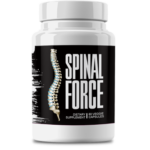This Village-Made Chinese Pain Reliever Eliminates Back And Joint Pain!
Ultimate Guide to Shoulder Pain Treatment at Home: Proven Techniques

Introduction to Shoulder Pain Treatment at Home
Shoulder pain is a common issue that can significantly affect your daily life. Understanding how to manage and treat it at home can provide immediate relief and prevent further complications. This comprehensive guide delves into various methods for shoulder pain treatment at home, ensuring you have the tools and knowledge to alleviate discomfort and improve your overall well-being.
Understanding Shoulder Pain
The shoulder is a complex joint with a wide range of motion, making it susceptible to various injuries and conditions. Understanding the nature of your shoulder pain is the first step in addressing it effectively. Pain can stem from muscles, tendons, ligaments, or bones, each requiring different treatment approaches. Recognizing the source of your discomfort can help you choose the most appropriate home remedies and exercises.
Common Causes of Shoulder Pain
Shoulder pain can result from numerous factors, including overuse, injury, or underlying medical conditions. Common causes include rotator cuff injuries, frozen shoulder, bursitis, and arthritis. Identifying the root cause of your pain is crucial for effective treatment. Whether it's due to repetitive strain from daily activities or an acute injury, understanding the cause will guide your approach to home treatment.
Importance of Home Treatment
Home treatment for shoulder pain is essential for immediate relief and long-term recovery. It allows you to manage pain effectively, reduce inflammation, and improve mobility without the need for invasive procedures. Incorporating home remedies and exercises into your routine can prevent the escalation of minor issues into chronic conditions. Moreover, home treatment empowers you to take control of your health and well-being.
Immediate Relief Techniques
Applying Ice Packs
Applying ice packs is a straightforward and effective method for reducing shoulder pain and inflammation. Ice helps constrict blood vessels, decreasing swelling and numbing the affected area. To use this technique, wrap an ice pack in a cloth and apply it to the painful area for 15-20 minutes, several times a day. Ensure to have breaks between applications to prevent skin damage. Ice therapy is particularly beneficial for acute injuries and can provide significant relief.
Using Heat Therapy
Heat therapy is another valuable technique for shoulder pain relief. Unlike ice, heat promotes blood flow and relaxes tense muscles. You can use a heating pad, warm towel, or take a warm shower to apply heat to the affected area. Aim to keep the heat applied for 15-20 minutes, ensuring not to use excessive temperatures that could cause burns. Heat therapy is ideal for chronic pain or stiffness, providing soothing comfort.
Over-the-Counter Pain Relievers
Over-the-counter pain relievers can be very useful in managing shoulder pain at home. Nonsteroidal anti-inflammatory drugs (NSAIDs) like ibuprofen or aspirin can reduce inflammation and provide significant pain relief. Always follow the recommended dosage instructions and consult with a healthcare provider if you have any pre-existing conditions or are taking other medications. Pain relievers can be a temporary solution while you incorporate other long-term treatment methods.
Stretching and Flexibility Exercises
Gentle Shoulder Stretches
Incorporating gentle shoulder stretches into your daily routine can help alleviate pain and improve flexibility. Simple stretches like the cross-body shoulder stretch or the doorway stretch can be highly effective. Hold each stretch for 20-30 seconds and repeat several times. It's important to perform these stretches slowly and gently to avoid further injury. Regular stretching can enhance your range of motion and reduce stiffness.
Range of Motion Exercises
Range of motion exercises are designed to improve the mobility of your shoulder joint. Activities such as the pendulum exercise or the shoulder blade squeeze can help maintain and restore movement. Perform these exercises daily, gradually increasing the range as your shoulder becomes more flexible. Consistent range of motion exercises can prevent the development of conditions like frozen shoulder and contribute to overall shoulder health.
Yoga for Shoulder Pain Relief
Yoga is an excellent practice for relieving shoulder pain and promoting overall well-being. Poses like the downward-facing dog, child's pose, and eagle arms stretch can target shoulder muscles and enhance flexibility. Practicing yoga regularly can reduce tension, improve posture, and strengthen the muscles around your shoulder joint. Ensure to follow proper techniques and listen to your body to avoid overexertion.
Strengthening Exercises
Resistance Band Workouts
Resistance band workouts are effective for strengthening shoulder muscles without putting excessive strain on the joint. Exercises like external rotations, shoulder presses, and rows using resistance bands can build muscle strength and stability. Start with light resistance and gradually increase as you build strength. Resistance bands offer a versatile and low-impact way to enhance your shoulder strength at home.
Bodyweight Exercises
Bodyweight exercises can also be beneficial for shoulder strength. Push-ups, plank variations, and shoulder taps are excellent for building muscle without requiring any equipment. Ensure to maintain proper form to avoid putting unnecessary strain on your shoulder. Incorporating these exercises into your routine can improve overall shoulder stability and reduce the risk of injury.
Dumbbell Exercises for Shoulder Strength
Dumbbell exercises offer another way to strengthen your shoulder muscles. Activities like dumbbell shoulder press, lateral raises, and front raises can target different parts of the shoulder. Start with light weights and increase gradually to avoid overloading the joint. Consistent dumbbell training can enhance muscle strength and support your shoulder's structural integrity.
Lifestyle and Ergonomic Adjustments
Maintaining Proper Posture
Maintaining proper posture is crucial for preventing and alleviating shoulder pain. Ensure that your shoulders are relaxed and not hunched forward, whether sitting or standing. Regularly check and correct your posture throughout the day. Proper posture reduces undue stress on your shoulder muscles and joints, contributing to long-term pain relief and overall musculoskeletal health.
Ergonomic Workstation Setup
An ergonomic workstation setup can significantly reduce the risk of shoulder pain, especially for those who spend long hours at a desk. Adjust your chair, desk, and computer monitor to ensure that your shoulders are relaxed and your arms are at a comfortable angle. Using ergonomic accessories like an adjustable chair and keyboard can prevent strain and promote a healthier working environment.
Avoiding Repetitive Strain
Avoiding repetitive strain is essential for shoulder pain prevention. Take regular breaks from activities that require repetitive shoulder movements, such as typing or lifting. Incorporate stretching and strengthening exercises into your routine to counteract the effects of repetitive strain. Being mindful of your movements and taking preventive measures can significantly reduce the risk of developing chronic shoulder pain.
Natural Remedies and Alternative Therapies
Herbal Remedies
Herbal remedies can offer natural relief from shoulder pain. Herbs like turmeric, ginger, and willow bark have anti-inflammatory properties that can reduce pain and swelling. You can consume them as supplements or incorporate them into your diet. Always consult with a healthcare provider before starting any new herbal regimen to ensure it's safe and appropriate for your condition.
Essential Oils for Pain Relief
Essential oils can be a soothing addition to your shoulder pain treatment at home. Oils like peppermint, eucalyptus, and lavender have analgesic and anti-inflammatory properties. Dilute essential oils with a carrier oil and massage them gently into the affected area. Aromatherapy can also provide additional relaxation and stress relief, contributing to overall well-being.
Acupressure and Acupuncture
Acupressure and acupuncture are alternative therapies that can effectively relieve shoulder pain. Acupressure involves applying pressure to specific points on the body, while acupuncture uses fine needles. Both methods aim to balance the body's energy flow and reduce pain. These therapies should be performed by trained professionals to ensure safety and efficacy. Many people find significant relief from shoulder pain through these techniques.
When to Seek Professional Help
Recognizing Severe Symptoms
While home treatments can be effective, it's crucial to recognize when professional help is needed. Severe symptoms like intense pain, swelling, or inability to move the shoulder may indicate a more serious condition. If your pain persists despite home treatment or if you experience symptoms like numbness or tingling, seek medical attention promptly. Early intervention can prevent complications and promote better outcomes.
Consulting a Healthcare Provider
Consulting a healthcare provider is essential if your shoulder pain does not improve with home treatment. A healthcare professional can diagnose the underlying cause of your pain and recommend appropriate treatments. This may include medications, physical therapy, or other interventions. A tailored treatment plan from a healthcare provider can address your specific needs and promote faster recovery.
Physical Therapy and Rehabilitation
Physical therapy and rehabilitation can be highly effective for shoulder pain relief and recovery. A physical therapist can design a personalized exercise program to strengthen your shoulder and improve flexibility. Regular physical therapy sessions can address the root cause of your pain and prevent future issues. Rehabilitation is particularly important after an injury or surgery to restore full function and reduce the risk of re-injury.
Conclusion and Final Tips
Summary of Home Treatment Methods
In summary, there are numerous effective methods for shoulder pain treatment at home. These include immediate relief techniques like ice and heat therapy, stretching and strengthening exercises, lifestyle adjustments, and natural remedies. Combining these approaches can provide comprehensive pain management and promote overall shoulder health. Consistency and patience are key to achieving long-term relief and preventing future pain.
Tips for Preventing Future Shoulder Pain
Preventing shoulder pain involves maintaining a healthy lifestyle and being mindful of your movements. Regular exercise, proper posture, and ergonomic adjustments can significantly reduce the risk of shoulder pain. Avoiding repetitive strain and incorporating stretching and strengthening exercises into your routine can further protect your shoulders. Staying proactive about your shoulder health can prevent minor issues from becoming chronic problems.
Encouraging Consistency and Patience
Consistency and patience are crucial for successful shoulder pain treatment at home. Regularly performing exercises and following home treatment methods can lead to significant improvements over time. It's important to listen to your body and avoid overexertion. With dedication and a proactive approach, you can effectively manage and prevent shoulder pain, enhancing your overall quality of life.








